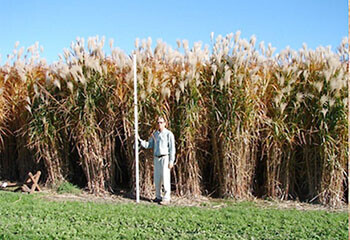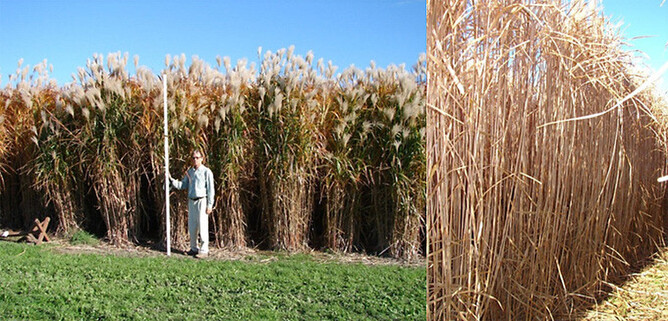You would really think that because it is the time of year when things are not growing, this would be the quiet time of year in the Miscanthus business. But it is in fact the time of year when we are trying to get people to firm up on their decisions about how many plants they are going to need in the coming spring so that we can produce enough plants to supply them, without overproducing. I sent our nurseryman an e-mail in May and said that at that stage we had orders for something between 60 plants and 80 million! The bottom number has come up significantly since then but there is still a lot of uncertainty about just how many plants we really need to produce for this spring.
It is interesting that the majority of serious interest from individuals seems to be coming from the South Island – notably Canterbury and southwards. I have no idea why this is the case but it does give the impression that South Island farmers are more progressive than North Island farmers. Lincoln University established trials last growing season on at least 10 paddocks on four farms in Canterbury and is planning to plant more this coming spring. These trials have so far exceeded our expectations. This may be some of the reason for the South Island interest, but we also have interest being shown from Otago and Southland – some as a result of people seeing this website and some as a result of innovative publicity produced by various small unique South Island based publications.
There is some increased activity now happening in the Waikato, particularly as a result of one agricultural contractor who not only has contacts with various landowners who are showing interest, but who is very innovative in his adaptation of machinery to meet the needs of establishing and harvesting Miscanthus.
We have been monitoring Miscanthus in Hawkes Bay on our oldest trial sites and have observed that the moisture content has decreased more slowly through this winter than we expected. Because of lack of experience in New Zealand, we do not know whether this will be the norm or whether it is a unique situation arising perhaps from the drought during the growing season with the plants retaining more water in early winter than they would normally do. We are monitoring closely and will make sure we do it even more intensively next year to see whether the same pattern emerges. It seems that for every question that we get answered there are five missions arising. Apparently this is the norm for research.
The initial reports from the Lincoln shelter research in Canterbury have been interesting and we now have approval from the researcher – Chris Littlejohn – to put his reports up on our website for the information of our visitors. This is research that is completely independent of Miscanthus New Zealand other than the fact that we supplied the initial plants and, along with many other people, provide some advice when this is asked for. We expect that these reports will be on the website before the end of August and as more reports come through we will get put them up as well.
Miscanthus research is also being carried out in New Zealand by Rocky Renquist of Bioenergy Cropping Solutions Ltd. When his results are published we will, with Rocky’s approval, either link to these results or will post the results directly on our website. This research is being carried out as part of a contract to supply biomass feedstock to the University of Canterbury Engineering School for testing through their pyrolysis process. In the process of growing this material, there is a lot being learned about the productive capacity of Miscanthus on different sites and its response to drought conditions. So far productivity results have exceeded our expectations by quite a margin.
Last week, Rocky sent me a report that has to remain confidential at the moment but he gave me permission to put up the photographs shown below. In relation to these photographs, he wrote:
Figure 1 shows the crop appearance at the Hastings research centre on 22 May, still in full flowering but two months past peak DM yield. The second photo in the figure is what plants look like after leaf shed, at the start of the commercial harvest window of June, July and August.
Figure 1. Giant miscanthus on 22 May (still flowering) and 31 May 2013 (after a frost).



